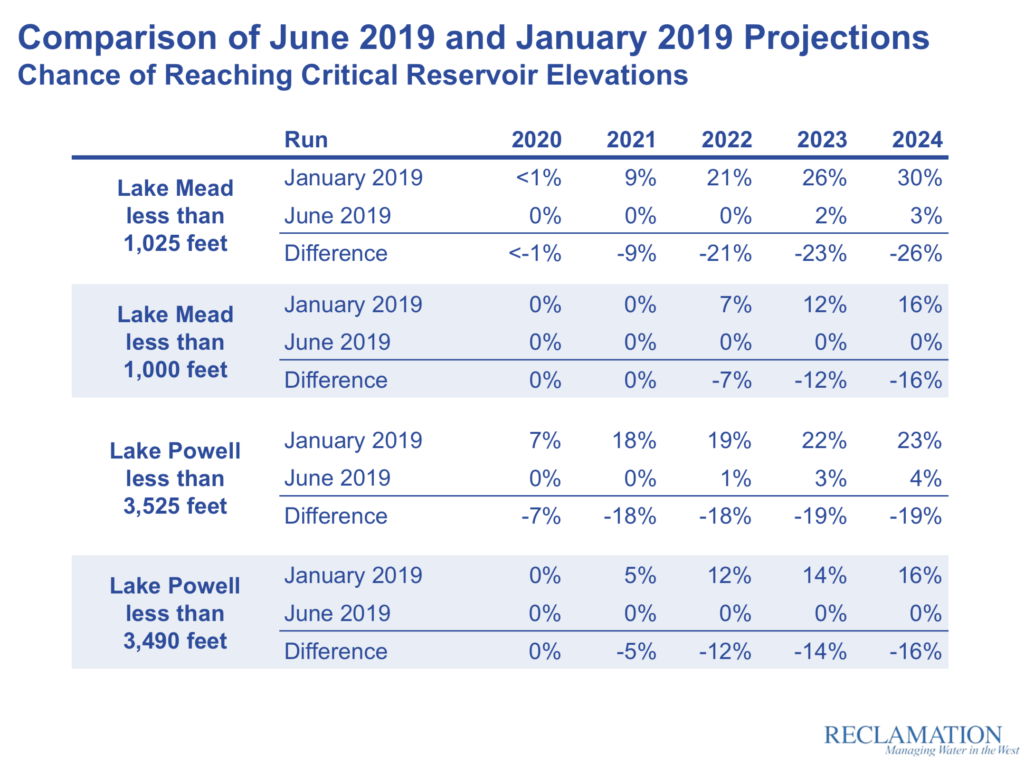The unusually wet winter (with an assist from new Colorado River Drought Contingency Plan water reduction rules) has substantially reduced the near-term scare-the-crap-out-of-me risks on the Colorado River for the next few years, according to new Bureau of Reclamation modeling.
Modeling done in January showed significant risk – a nearly one in three chance – of Lake Mead dropping below elevation 1,025 by 2024, a level that would place the reservoir’s long term ability to make deliveries at risk. That has dropped to a one-in-30 chance, according to the new USBR modeling.
At Lake Powell, the risk of reaching elevation 3,525, a danger point beyond which power generation and the Upper Basin’s ability to meet Colorado River Compact delivery obligations are at risk, has dropped from a one in four chance by 2024 to a one in 25 chance. The chance of dropping below Powell’s minimum power pool – the point at which the reservoir is too low to generate electricity – has dropped from one in six to essentially zero.
Details of the modeling results, presented today to basin water managers, suggest the bulk of the risk reduction is the result of the wet winter, which has pumped up runoff and reservoir storage. But the new Drought Contingency Plan, under which water users in the Lower Colorado River Basin have agreed to leave water in Lake Mead if and when it drops below critical thresholds, also played a role.
As I write this (Monday evening, July 1), you can find the old model results here. The new ones aren’t posted yet, but by tomorrow (July 2) the new ones should be posted at the same link.


Given what we know about Colorado River hydrology it would be prudent to model the CRSS portion with the index sequential method using only the stress test years instead of back to 1906.
Oh don’t you worry, corporations will find new and interesting ways to suck more of that water out. But this really is good news.
It would be interesting to have Reclamation determine the different probabilities of reaching critical reservoir elevation without the Drought Contingency Plan. That way one can evaluate the effect of the good runoff season and the additional benefit of the DCP.
I also agree with Doug Blatcford’s comment.
I also agree with Don Gross’s comment …. <:)
During 2018 it was all about shortage declaration for Lake Mead at 1075′. The chart shown omits this level, why? Stats can be manipulated to show only what you want to show.
Water managers will continue to assert “rights” to imaginary water!?
Hugh – I chose this chart because it reflects the reservoir levels of interest to me. If you click on the link you will find the 1,075 risk projections you are interested in.